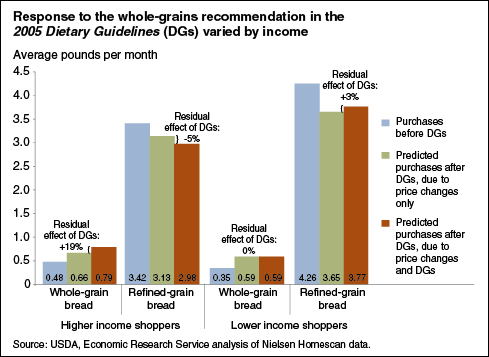Dietary Guidelines shifted some Americans' bread purchases toward whole-grain options
- by Lisa Mancino and Fred Kuchler
- 1/2/2013

The Federal Dietary Guidelines for Americans provide consumers with science-based advice for making healthy food choices. A new recommendation in the 2005 Dietary Guidelines was that half of all grains people eat be whole grains. ERS researchers analyzed grocery store bread purchases before and after release of the 2005 Guidelines to estimate the impact of the Guidelines separate from other economic factors that affect purchase decisions—such as the price of whole-grain relative to refined-grain bread, changing consumer incomes, seasonality in bread demand, and regional differences in food preferences. The 2005 Guidelines were responsible for households with incomes above 185 percent of the Federal poverty level increasing their whole-grain bread purchases by 19 percent and decreasing refined-grain purchases by 5 percent. While lower income households also purchased more whole-grain bread, their increased purchases were almost entirely due to declining relative prices of whole-grain bread. This chart appears in "Dietary Guidelines Have Encouraged Some Americans To Purchase More Whole-Grain Bread" in the December 2012 issue of ERS’s Amber Waves magazine.

